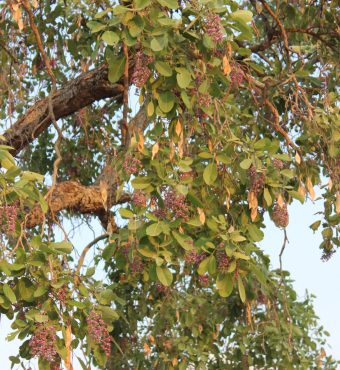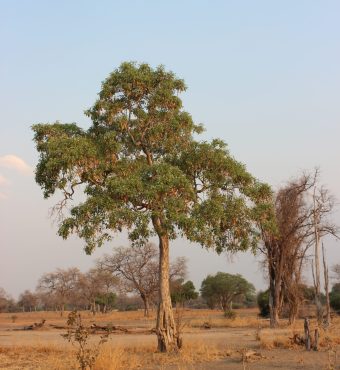


Botanical Name: Philenoptera violacea
Common Name: Rain or Lilac Tree, Longocarpus capassa, Chiya, Kabosha, Mupanda, Muhulu, Chipakasa, Mukololo
Plant Family: Fabaceae (Legume Family) Papilionoideae
Growth Form, Habitat and Distribution: A medium to large semi-deciduous tree with straight trunk and a fairly dense, rounded crown with drooping branch-ends. Common and occurs throughout Zambia in most woodland types at low and medium altitudes, but not in the north-west.
Size: Height up to 20m, spread up to 10m.
Bark: Pale grey, smooth becoming cracked and scaly with age. Exudes a crimson sap if damaged.
Leaves: Alternate, compound, imparipinnate, with 1 or 2 pairs of opposite, oblong to ovate, leathery leaflets, glossy green above, grey-green below, the terminal leaflet much larger (4 to 15cm), apex with a fine hair, young leaves hairy. Petiole 2 to 4cm.
Flowers: Showy and fragrant terminal spays (up to 30cm) of small, mauve, pea-like flowers, August to November.
Fruit: A flat, creamy-grey, indehiscent pod with sharp ends (7 to 15cm) often thinly winged, hanging in untidy clusters maturing the following May to October, yielding 1 or 5 kidney-shaped seeds.
Uses: A “rain tree” with drops falling from the spittle bug (Ptyelus grossus). The tree also supports a long and copious honey flow. The leaves, flowers and fruit are browsed by wildlife. The roots are used in tradition medicine and contain rotenone, the insecticide constituent.
